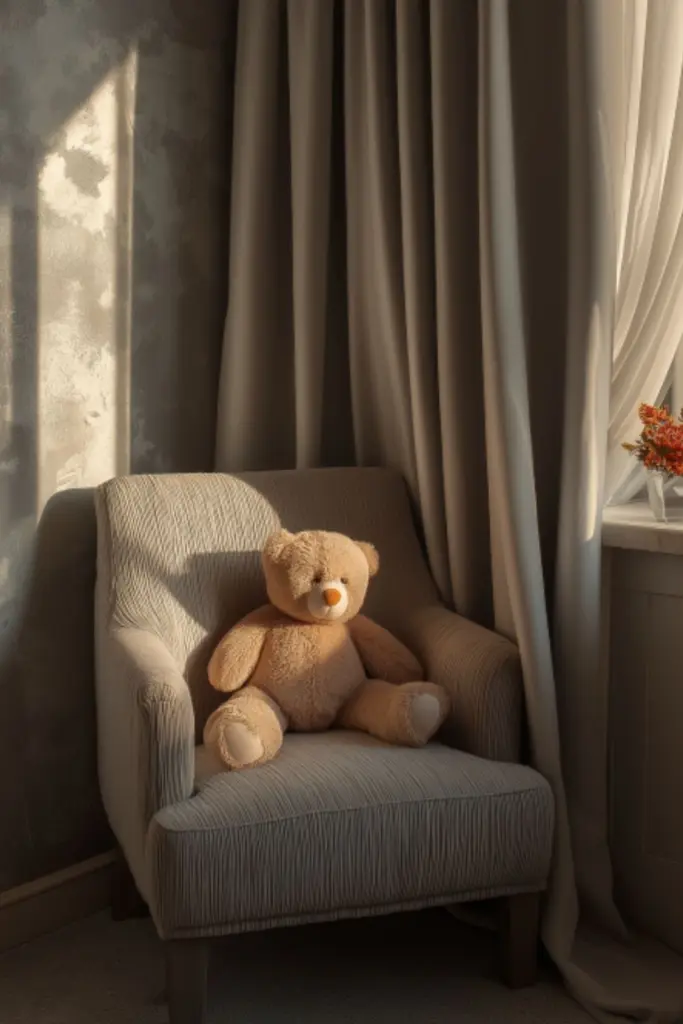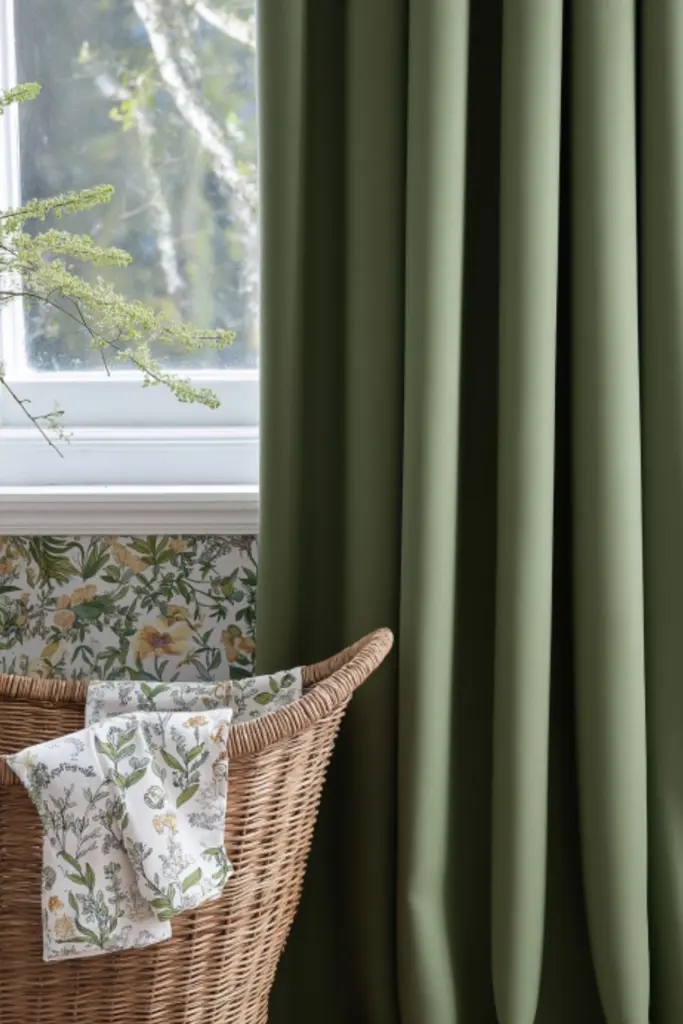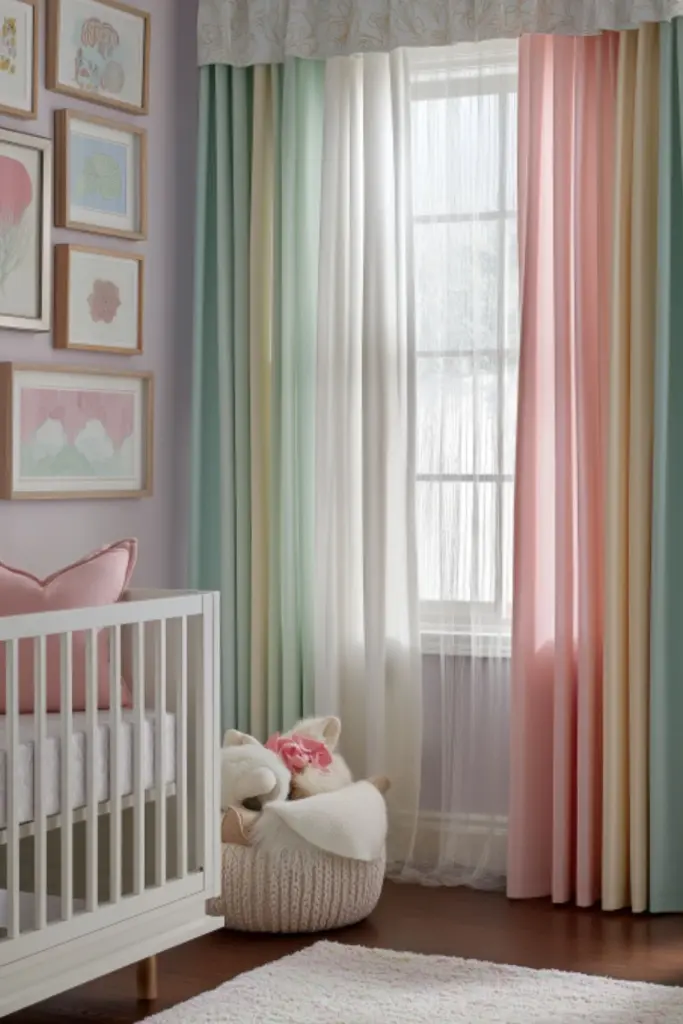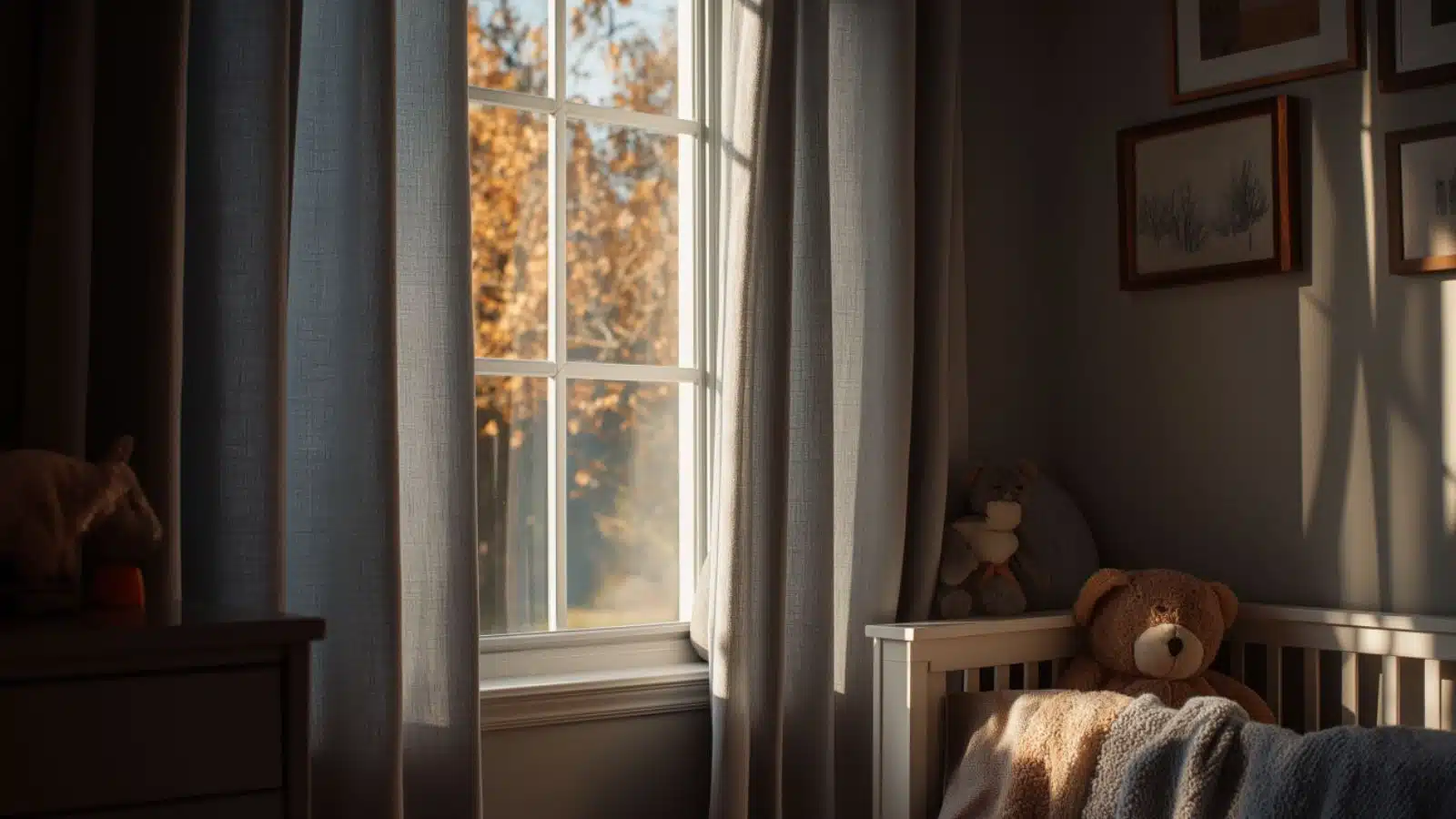Blackout Nursery Curtains for Better Baby Sleep: A Practical and Stylish Guide
Table of Contents
Sleep is sacred—especially when you’re a new parent. But when sunlight streams into the nursery during nap time or early morning light wakes your baby too soon, restful sleep becomes a daily challenge. That’s where blackout nursery curtains step in as a game-changing solution.
According to pediatric sleep consultants, light is one of the biggest disruptors of infant sleep. Babies are sensitive to changes in brightness, and even a small sliver of daylight can make it harder for them to fall asleep—or stay asleep. Creating a sleep-conducive environment is crucial during those early months, and blackout curtains are one of the simplest yet most effective ways to do it.
In this blog post, we’ll explore the many benefits of blackout nursery curtains, from their role in supporting healthy sleep patterns to how they add charm and style to your baby’s room. You’ll find practical guidance on curtain styles, installation methods, safety considerations, and even tips on selecting fabrics and colors that blend beautifully with your nursery theme. Whether you’re designing a cozy cocoon for a newborn or trying to improve nap consistency for a toddler, this guide will help you choose blackout curtains that work just as well for aesthetics as they do for function.
Why Blackout Curtains Are Essential for Baby Sleep

The primary function of blackout nursery curtains is to block outside light—and they do it exceptionally well. But their value goes beyond just darkening a room. For infants and toddlers, who thrive on routine and environmental cues, the right window treatment can significantly impact sleep quality and overall mood.
Daylight, especially in the early morning or late afternoon, can signal the body to wake up. Blackout curtains prevent that by maintaining consistent darkness regardless of the time of day. This helps regulate your baby’s circadian rhythm and makes naps and bedtime transitions smoother. It’s especially helpful during daylight saving time changes, bright summer evenings, or if you live in an area with streetlights or nearby neighbors.
Another benefit? Noise reduction. While blackout curtains aren’t soundproof, their thick material can absorb some sound, creating a quieter, more peaceful environment. Many styles also help regulate room temperature by insulating windows, which is helpful for maintaining a cozy sleep space.
Top Benefits of Blackout Nursery Curtains
| Benefit | Why It Matters | Bonus Effect |
|---|---|---|
| Blocks out sunlight | Promotes deeper, uninterrupted sleep | Helps with daytime napping |
| Supports circadian rhythm | Regulates sleep-wake cycles | Encourages better sleep training |
| Minimizes external noise | Creates a calmer nursery environment | Reduces sleep disruptions |
| Temperature control | Keeps room cooler in summer, warmer in winter | Enhances overall comfort |
| Stylish functionality | Blends into nursery design | Doubles as decor feature |
Choosing the Right Style of Blackout Curtains

Blackout curtains are available in a wide range of styles, and selecting the right one depends on your design preferences, window type, and how dark you want the room to be. Some curtains offer 100% blackout capabilities, while others are room-darkening with a softer appearance.
The most common options include traditional rod pocket or grommet-top panels, blackout Roman shades, layered curtains with liners, and even blackout roller blinds. If you’re looking for a more decorative style, opt for blackout curtains with textured fabrics or soft patterns that complement your nursery theme.
Rod-pocket panels offer a clean, classic look, while grommet-tops are easier to open and close. Layering sheers over blackout panels is a smart way to soften the look while maintaining functionality.
Curtain Style Comparison
| Curtain Type | Light Control | Best For | Visual Appeal |
|---|---|---|---|
| Grommet panels | Excellent | Easy glide function, modern rooms | Sleek, contemporary look |
| Rod pocket curtains | Very good | Classic or vintage nursery themes | Soft, traditional design |
| Roman blackout shades | Excellent | Compact windows, minimalist spaces | Neat, tailored appearance |
| Blackout roller blinds | Maximum | Ultra-dark environments | Clean, low-profile design |
| Double curtain layers | Customizable | Decorative plus functional combo | Elegant, adds texture and depth |
Fabric, Color, and Pattern Choices for Nursery Harmony

When styling a nursery, blackout curtains should do more than block light—they should elevate the room’s aesthetic. The fabric, color, and pattern you choose can help tie the entire space together, complementing furniture, wall paint, and accessories.
For a serene and sleep-conducive environment, soft neutrals like ivory, gray, sage green, and blush are popular choices. These shades calm the senses and blend beautifully with natural wood and white furniture. If your nursery has a theme—like woodland animals, sky and stars, or vintage travel—choose blackout curtains that subtly echo those motifs with prints or embroidery.
When selecting fabric, prioritize thickness and lining. Triple-weave polyester is a common blackout fabric—it’s dense, durable, and soft to the touch. Velvet or faux linen adds luxury and weight, while cotton blends work well for more casual spaces.
Patterned blackout curtains can add visual interest to a minimalist nursery. Think tiny polka dots, stars, clouds, or abstract geometric shapes. Just be mindful not to overwhelm the space with too many competing patterns. If your wallpaper is bold, go with solid-colored curtains—or vice versa.
Curtain Coordination Tips
| Element to Match | Curtain Suggestions | Style Tip |
|---|---|---|
| Wall color | One shade lighter or darker | Creates depth without contrast overload |
| Furniture finish | Warm-toned curtains for natural wood | Softens and balances visual weight |
| Theme accents | Star, moon, or animal motifs | Repeats design language subtly |
| Flooring or rugs | Match undertones (cool or warm) | Brings cohesion to the room’s base palette |
| Lighting fixtures | Metallic or matte textures | Use tiebacks or rods in matching finishes |
Installation Tips for Maximum Light Blockage
Even the most opaque curtains can fall short if they’re not installed properly. A common mistake is mounting blackout curtains in a way that allows light to seep in around the edges. Fortunately, there are easy ways to ensure your curtains deliver complete darkness.
Start by choosing a curtain rod that extends at least 6–10 inches beyond the window frame on each side. This allows the curtains to cover the entire window without leaving gaps. Mount the rod 4–6 inches above the window to create a taller, more elegant look and block top light leaks.
If light still sneaks through the sides, consider using wraparound rods or adding magnetic side panels or Velcro strips to secure the fabric flush to the wall. Another option is pairing blackout panels with blinds underneath for added light control.
Be sure to choose hardware that complements your nursery style—brass, matte black, or brushed nickel can subtly echo other design elements like lamp bases or crib rails.
Installation Guide for Light-Blocking Success
| Installation Step | Why It’s Important | Pro Tip |
|---|---|---|
| Extend curtain rod width | Covers sides of window | Choose adjustable rods for flexibility |
| Mount above frame | Blocks top light and adds height | Creates visual drama |
| Add wraparound rods | Curves curtains toward the wall | Especially helpful for larger windows |
| Use side magnets or Velcro | Prevents side light leakage | Discreet and easy to install |
| Layer with blinds or liners | Double blackout protection | Great for extremely bright rooms |
Safety Considerations for Nursery Curtains
When decorating a baby’s room, safety is just as important as style. Curtains—especially blackout ones, which are often heavier—need to be installed securely and designed with child safety in mind.
First, always ensure that curtain rods are mounted into studs or with proper anchors. This prevents them from being pulled down if tugged. Avoid curtain tiebacks with long cords or loops, as they pose strangulation hazards. Instead, opt for soft Velcro tiebacks or use curtain holdbacks mounted high out of baby’s reach.
Keep cribs, bassinets, or changing tables away from windows entirely. Babies quickly become mobile, and a nearby curtain can become a climbing hazard or entanglement risk.
Choose curtains that are OEKO-TEX certified or labeled as free from harmful chemicals. Babies’ respiratory systems are sensitive, and safer textiles reduce exposure to unnecessary irritants.
Nursery Curtain Safety Checklist
| Safety Concern | Solution | Note |
|---|---|---|
| Mounting strength | Use anchors or studs for brackets | Test weight before leaving unattended |
| Tiebacks or cords | Avoid or replace with fabric loops | Keep all hardware out of reach |
| Curtain length | Use panels that stop at or above floor | Prevent baby from pulling or chewing |
| Chemical safety | Look for OEKO-TEX or Greenguard labels | Reduces exposure to VOCs or formaldehyde |
| Furniture proximity | Position cribs away from curtain areas | Minimizes climbing and strangulation risk |
Maintaining and Cleaning Blackout Curtains
Blackout curtains may be hardworking, but they don’t require high-maintenance care. Most blackout panels are machine washable or can be spot-cleaned with mild detergent. However, always check the manufacturer’s label before washing—some fabrics may shrink or lose their blackout backing if not handled correctly.
If your curtains attract dust, use a vacuum with a brush attachment on a low setting to remove debris. For spot stains, gently blot with warm water and a bit of gentle soap—avoid vigorous scrubbing, which can damage the light-blocking layer.
To keep curtains hanging smoothly, shake them out weekly and re-adjust pleats or folds. Consider using curtain weights in the hem to help them hang straighter and prevent curling over time.
Care and Maintenance Guide
| Task | Frequency | How To Do It |
|---|---|---|
| Dust removal | Weekly or bi-weekly | Use handheld vacuum with brush attachment |
| Spot cleaning | As needed | Blot with damp cloth, no harsh chemicals |
| Full washing | Every 3–6 months | Machine wash cold, gentle cycle (if allowed) |
| Ironing or steaming | When wrinkled | Use low heat on fabric side, avoid backing |
| Repositioning folds | Monthly | Straighten pleats or tucks to maintain shape |
Conclusion
Blackout nursery curtains are more than a window treatment—they’re a smart, stylish investment in your baby’s sleep and comfort. From improving nap quality to enhancing the nursery’s overall look and feel, they provide practical benefits wrapped in aesthetic appeal.
Whether you opt for soft neutrals, playful patterns, or tailored shades, the right blackout curtain brings harmony to both form and function. And when installed safely and thoughtfully, they become a quiet hero in your day-to-day parenting routine—one gentle fold at a time.

